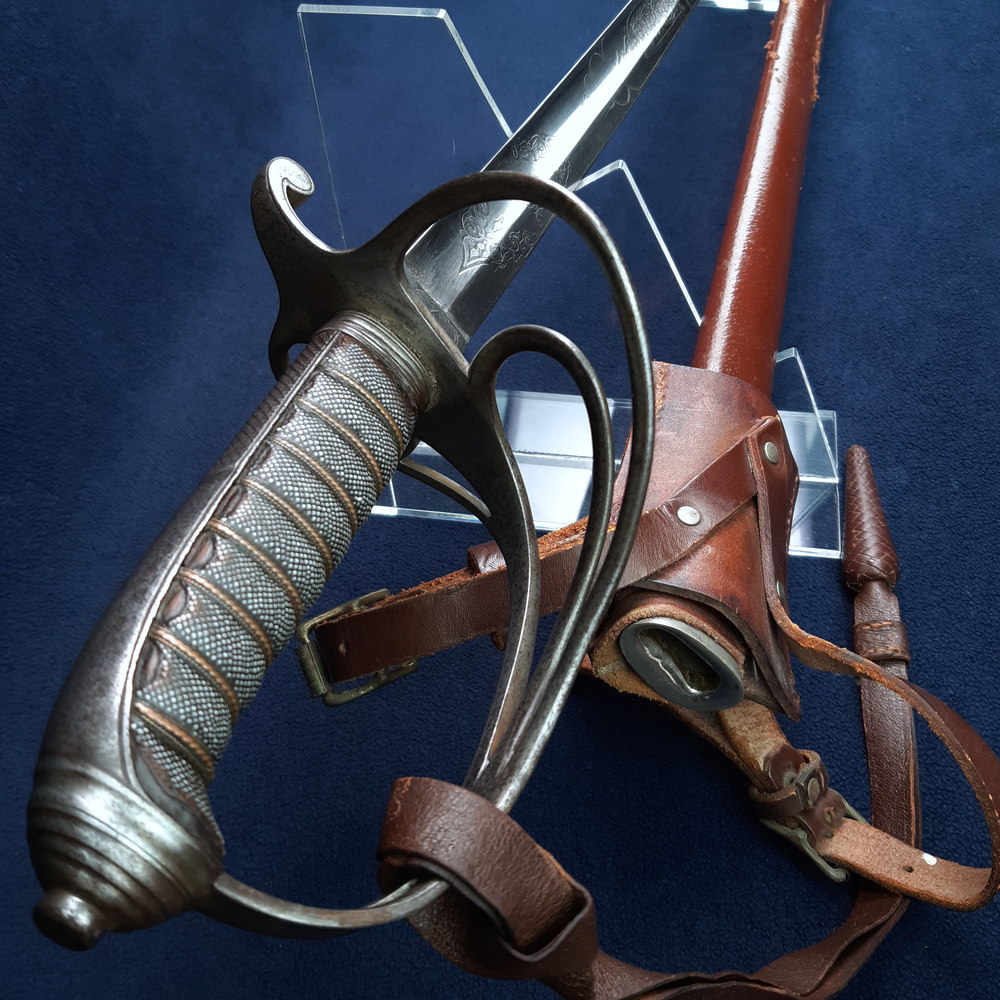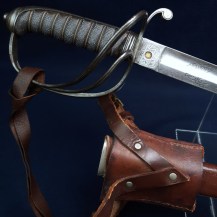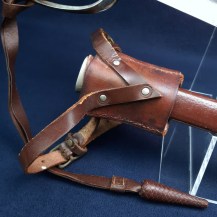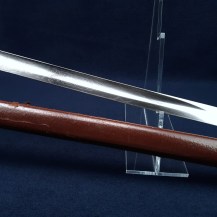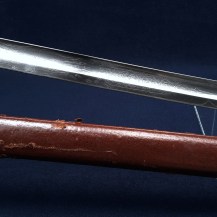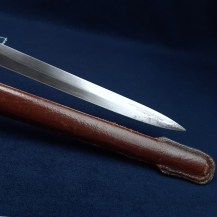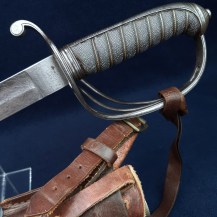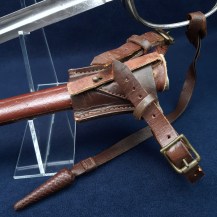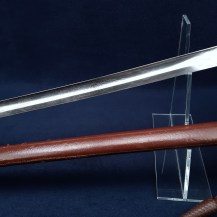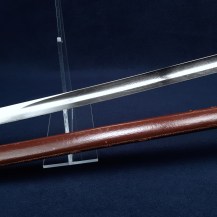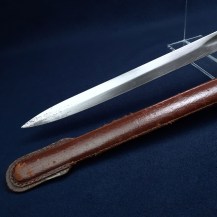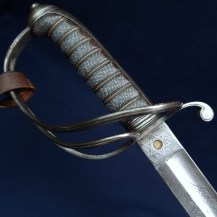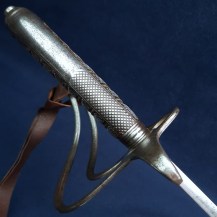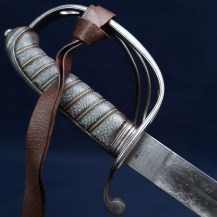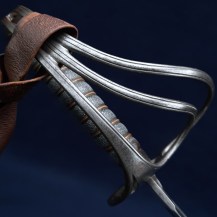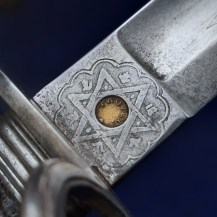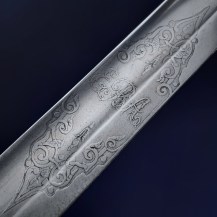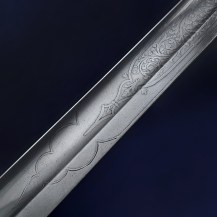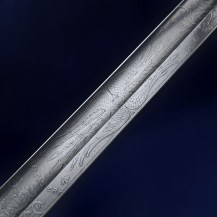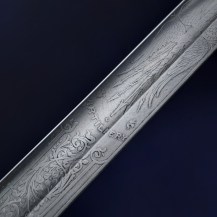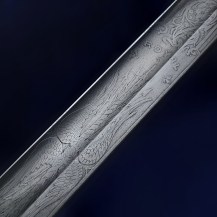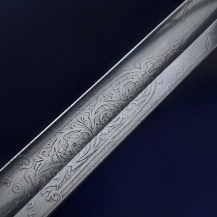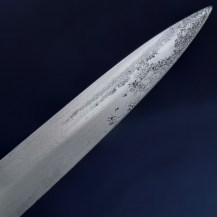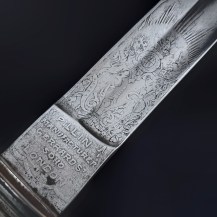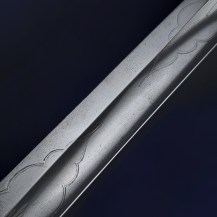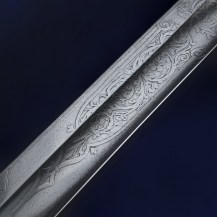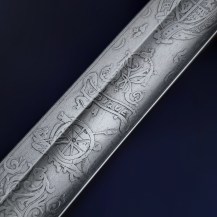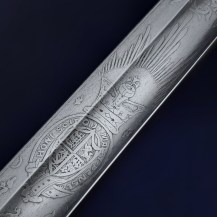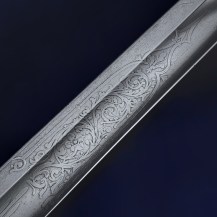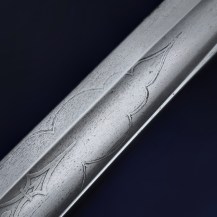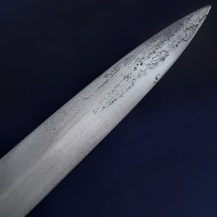British Victorian 1821 Pattern Artillery Officer’s Sword by Pillin, 1862-80
Slightly curved, spear pointed, single fullered blade, steel three-bar hilt with incised lines, sword knot slit in the knucklebow and comma-shaped quillon. No leather washer. Steel ferrule, smooth backstrap with chequered thumb rest and integral stepped pommel with tang button. Wire bound grip of grey shagreen over wood. Brown leather field sword knot with acorn. Brown leather field scabbard with white metal throat piece, leather frog, the frog with plated steel rivets and brass buckles. Blade 34½ inches in length, the sword 40¼ inches overall.
One side of the blade bears an inset brass proof slug at the ricasso which reads ‘PROVED’, the slug surrounded by an etched six-pointed star. This side of the blade is further etched with the owner’s initials ‘ERA’ within a foliate cartouche, ‘ROYAL ARTILLERY’ paired wings & lightning bolts and more foliate motifs. The blade is etched at the ricasso on the other side with the maker’s mark ‘PILLIN MANUFACTURER GERRARD ST SOHO LONDON’ below the royal coat of arms, and further etched on the blade with the ‘VR’ cypher of Queen Victoria, ‘UBIQUE’ within a scroll (the sole battle honour of the Royal Artillery) a cannon with its ramrod, the crown and royal coat of arms (this time without supporters) and more foliate motifs. The spine of the blade is etched with a centre of percussion arrow.
Pillin was a family firm of sword cutlers established by George Alfred Pillin in 1840. The firm moved to premises in Gerrard St, Soho in 1862. George’s son Septimus took over in 1880 and began etching swords with the maker’s mark ‘S. J. PILLIN’ instead of merely ‘PILLIN’ - so this sword most likely dates from the period 1862-1880. One of the last independent swordmakers left in the early 20th century, Pillin was bought out and absorbed by the Wilkinson Sword Company in 1922.
The blade is bright with some cleaned light pitting around the tip, where it feels to have been sharpened, one small spot of heavier patination near the shoulder below the maker’s mark, otherwise only small spots of light patination. Speckled patination to the hilt, backstrap, pommel and ferrule, some very light cleaned pitting to the backstrap.
The shagreen of the grip has shrunk slightly exposing the wood core in places along the edge of the backstrap, but this has been limited by the grip wires which are all present and tight. The shagreen itself has light handling wear, some small losses next to the ferrule which again expose wood. The sword is firm in the hand and well peened, the blade ringing when struck.
The leather sword knot is flexible with only light surface rubbing in places. The leather of the scabbard has some light gouging to its surface in the midsection, not deep enough to expose the wood core, and some abrasion to the chape section, particularly at its edges. The scabbard’s stitching is all intact, the throat piece is bright and free of dents, and the frog remains strong and flexible.

